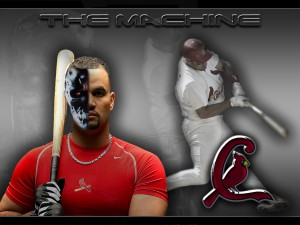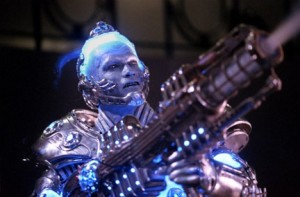By Jake McCormick
In the past 42 years of Major League Baseball, there have been 100 no-hitters, including nine perfect games. The record for consecutive batters retired was set and broken in the span of two years by White Sox teammates Bobby Jenks and Mark Buehrle. Fernando Tatis hit two grand slams in one inning.
The single season home run record, the most hallowed record in all of sports, has been broken twice in the span of four years after standing strong for 37. Hank Aaron’s all-time home run record fell at the hands of the Darth Vader of professional sports. On top of that, baseball is still reeling from a scandal so big that Commissioner Bud Selig’s considered reinstatement of Pete Rose is just an afterthought. The list of “I can’t believe what I just saw”s can go on and on.
But since 1967 and Carl Yastrzemski, no batter has accomplished the Triple Crown of hitting. Eight pitchers have done it by leading their respective leagues in strikeouts, wins, and ERA, and five players have received the distinguished Loser Triple Crown award by finishing dead last in the three major hitting categories.
I would argue the Loser Triple Crown is just as difficult because it means the manager had no one better to play, but why is the Triple Crown so hard to obtain?

That leaves us with Pujols, who leads the National League in home runs at 34, and is second in RBIs with 92. Although he is hitting .314, the Terminator is only ninth in the league and 28 points away from the top spot. A closer look at what Yaz had to do to get the Triple Crown and some of the factors working against Pujols will provide skeptics with more ammunition than Waco. Sidenote: Because baseball stat collecting was so much different in 1967 than it is today, I’m going to go by the league and player stats at the end of July. It should also be noted that when I say “league” I mean the American for Yaz and National for Albert.
Carl Yastrzemski finished the 1967 season with a .326 batting average, 44 home runs, and 126 RBI. But at the beginning of August that year, he had compiled a .322 BA (third in the league), 26 HR (third again), and tied for the lead in RBIs with 75. The two players ahead of him in batting average were reigning Triple Crown winner Frank Robinson (.330) and Al Kaline (.325), but they played a combined six games in the month of July. Yaz’s biggest competition came form Twin Harmon Killebrew, who was leading the league in home runs (32) and tied in RBIs (75). Clearly Yaz had a hill to climb if he was going to get to the Triple Crown, and the fact that he hit .523 with five home runs and 16 RBIs in the last 12 games of the season definitely sealed the teal.
Pujols was in a better starting 
In 1967, only four players in the American League hit above .300 for the season, whereas 14 National League players hit above .300 in 2008 and two were on the top side of .350. This can be attributed to better scouting and technology, where players have access to those PitchCams ESPN and FOX use and are better prepared than ever to face even the toughest pitchers. That scouting also can work in favor of the pitchers, but the game has done the opposite since 1967. The mound was lowered in 1969 from 15 to 10 inches, which takes away velocity and arc from a pitch and gives the hitters a better opportunity to square up on a ball. Likewise, strike zones are far less forgiving and much more inconsistent, which allows hitters to be much more selective and forces the pitchers to throw over the plate more often than they should.
In 1967, there were 20 teams in both leagues. There are currently 30, and although scouting and networking across the world can net players that would’ve never seen the Bigs in 1967, there are at least two pitchers on each team that really should be in Triple A. With more teams comes more bad relievers (or failed starters, as they really should be called) and starters that are trotted out just to eat innings. The save didn’t become an official stat until 1969 but relief pitching was considered a demotion to Triple A, whereas now relief pitchers have a variety of set roles and can make full careers out of their success.
Pujols plays in a hitter’s league, where stadiums are designed for home runs, pitchers are happy to have an ERA around 4.00, and the quality of competition has diminished. On top of that, Yastrzemski was so wrapped up in the Red Sox’s pennant race that he didn’t even know he won the Triple Crown until read an article in the newspaper.

If Washington National Ryan Zimmerman, who plays for the worst team in either league, was getting nationwide front page coverage for a 30-game hitting streak, it would be impossible for Pujols to dodge any additional pressure to break the 42 year absence of a Triple Crown winner. Pujols’ blood is colder than Mr. Freeze’s (minus the awesomely terrible Arnold one-liners), but even he couldn’t avoid the constant barrage of questions surrounding the accomplishment.
Despite all the factors working against Albert, there are still almost two months of baseball left to play and teams will be forced to pitch to him if new teammate Matt Holliday continues mashing (since joining the Cardinals, he is hitting .541 with three home runs and 10 RBIs). Pujols will undoubtedly put up better overall numbers than Yaz did in 1967, but the rest of the league has caught up to the learning curve through scouting, diminished pitching quality, and the MLB’s own actions. If anyone could break the streak, it certainly would be Albert, but I wouldn’t bet on it.
